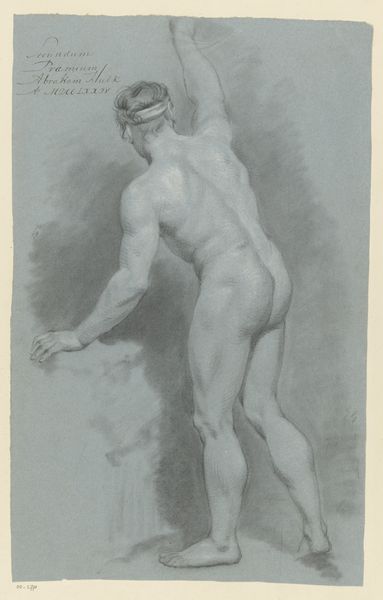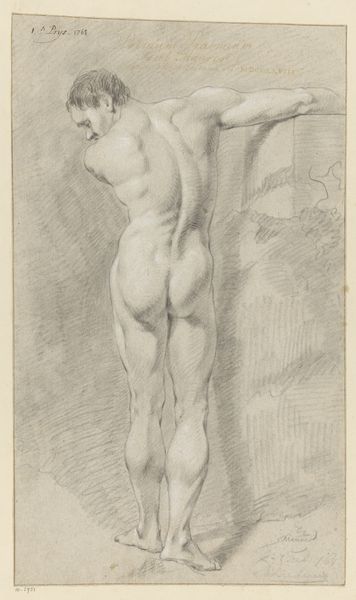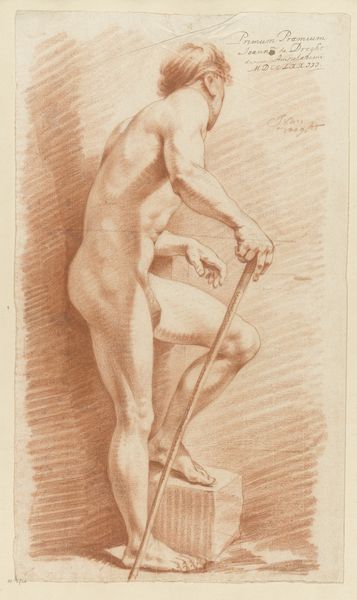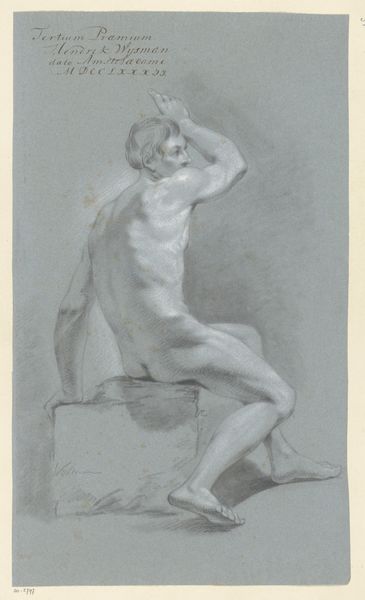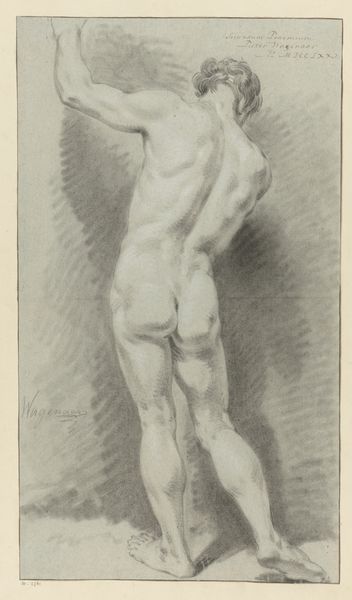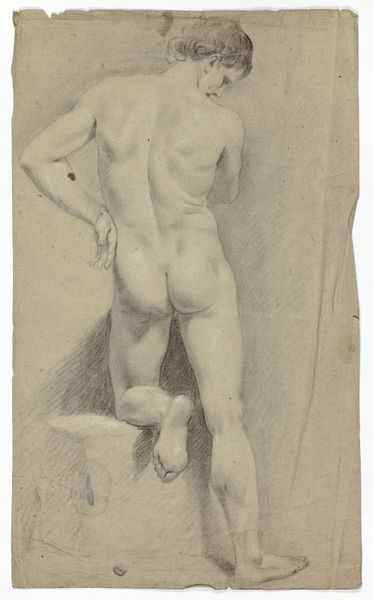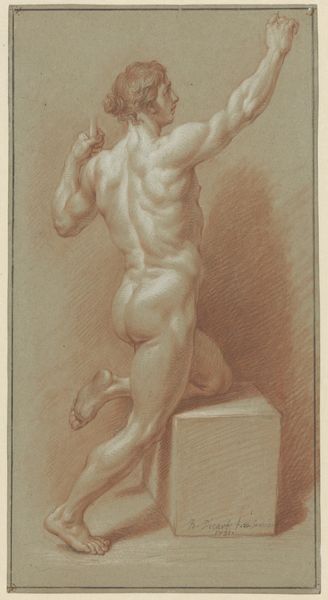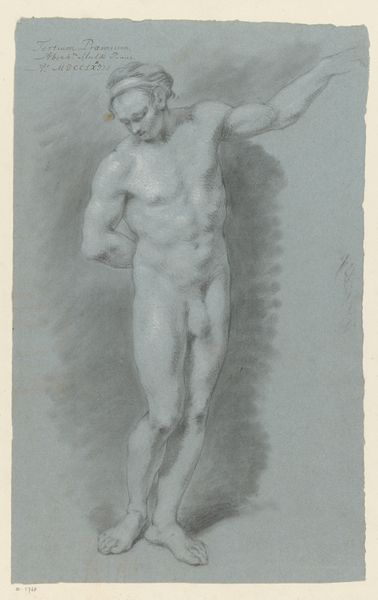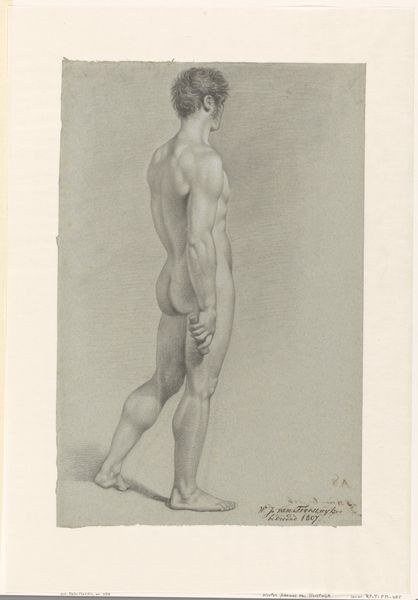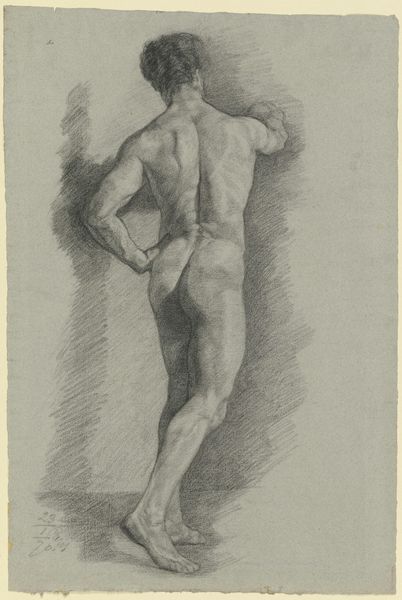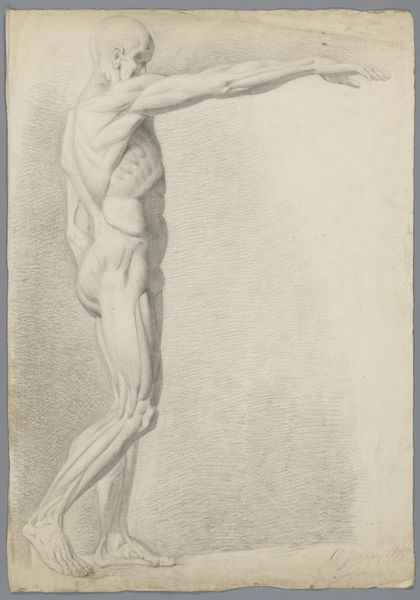
drawing, charcoal
#
drawing
#
pencil sketch
#
landscape
#
classical-realism
#
charcoal drawing
#
charcoal
#
academic-art
#
nude
Dimensions: height 532 mm, width 316 mm
Copyright: Rijks Museum: Open Domain
Curator: I'm immediately drawn to the modeling of the muscles—they're almost sculptural in this charcoal drawing. Editor: Agreed. Let's set the stage. Here we have "Standing Male Nude, Seen from the Back," possibly created between 1770 and 1777, by Marten Houtman. The material itself, charcoal, hints at the academic practices of the time, focusing on mastering the human form. Curator: It's very clearly academic art, harking back to classical ideals of the male physique. The process, the endless study of anatomy... it was all about control and mastery. The paper itself seems almost like a ground for a more 'important' piece. Editor: And that pursuit of ideal form wasn't neutral. It served a societal function—reinforcing hierarchies of gender and power. The male nude became a site where notions of masculinity, beauty, and even civic virtue were constructed and disseminated. Consider who had access to these academies, who was allowed to depict and possess these images? Curator: Right. There's a tension there. On the one hand, this drawing showcases incredible skill. The way Houtman has rendered the light playing across the back muscles is stunning. But the labor involved, the sheer hours dedicated to mastering this specific aesthetic, becomes problematic when viewed critically. It speaks volumes about what was valued and prioritized in artistic training. Editor: Exactly! How are bodies categorized, displayed and consumed? Think, too, about the male gaze inherent in its creation. The very act of observing and representing the nude body places it within a system of power dynamics that we need to acknowledge and confront. And consider that while *male* nudes were acceptable for 'study,' female nudes were fraught with controversy and limitations regarding acceptable depictions. Curator: That's crucial. It wasn't just about rendering anatomy accurately. It was about upholding certain values. It prompts a reflection on the legacy of art education and how those inherited values still resonate today in the art world, and wider cultural sphere. Editor: Ultimately, a powerful reminder that even seemingly straightforward academic studies like this nude drawing carry within them complex webs of social and historical significance, demanding we unpack assumptions that inform our understanding. Curator: Indeed. Seeing the hand of the artist, understanding the historical context… these help us perceive these objects beyond simple aesthetics. Editor: Precisely. Approaching these works critically lets us recognize them as reflections and enactments of wider social norms.
Comments
No comments
Be the first to comment and join the conversation on the ultimate creative platform.
